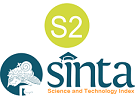Analysis of Students' Cognitive Structure through the Assimilation and Accommodation Framework on Work and Energy Material
Abstract
Keywords
References
Agayon, A. J. D., Agayon, A. K. R., & Pentang, J. T. (2022). Teachers in The New Normal : Challenges and Coping Mechanisms in Secondary Schools. Journalof Humanities and Ducation Development, 4(1), 67–75.
Aldianisa, E. T., Huda, N., & Effendi-Hsb, M. H. (2021). Analisis Miskonsepsi Siswa dalam Menyelesaikan Soal Pecahan Berdasarkan Kerangka Kerja Asimilasi dan Akomodasi di MTsN 4 Kerinci. Jurnal Cendekia : Jurnal Pendidikan Matematika, 5(3), 2141–2151. https://doi.org/10.31004/cendekia.v5i3.737
Chabibah, L. N., Siswanah, E., & Tsani, D. F. (2019). PYTHAGORAS : Jurnal Pendidikan Matematika , 14 ( 2 ), 2019 , 199-210 Analisis kemampuan pemecahan masalah siswa dalam menyelesaikan soal cerita barisan ditinjau dari adversity quotient. 14(2), 199–210.
Dessella, I. R., Sutopo, & Wartono. (2018). Identifikasi Kesulitan Siswa SMA pada Materi Usaha-Energi. Momentum: Physics Education Journal, 2(1), 15. https://doi.org/10.21067/mpej.v2i1.2370
Docktor, J. L., & Mestre, J. P. (2014). Synthesis of discipline-based education research in physics. Physical Review Special Topics - Physics Education Research, 10(2), 1–58. https://doi.org/10.1103/PhysRevSTPER.10.020119
Erwinsyah, H., Muhassin, M., & Asyhari, A. (2020). Pengembangan four-tier diagnostic test untuk mengetahui pemahaman konsep peserta didik pada materi gerak lurus. Jurnal Pendidikan Fisika Dan Keilmuan (JPFK), 6(1), 1. https://doi.org/10.25273/jpfk.v6i1.5125
Fatonah, U., Maison, M., & Hidayat, M. (2022). Development of Five-Tier Diagnostic Test to Identify Misconception in Rigid Body Equilibrium. Berkala Ilmiah Pendidikan Fisika, 10(2), 199. https://doi.org/10.20527/bipf.v10i2.13077
Fiorella, L., & Pilegard, C. (2021). Learner-generated explanations: effects on restudying and learning from a multimedia lesson. Educational Psychology, 41(1), 45–62. https://doi.org/10.1080/01443410.2020.1755829
Handhika, J., Sasono, M., Huriawati, F., Maisaroh, M., & Aritonang, J. (2023). Development of An Instrument to Test Understanding Kinematic Concepts. Jurnal Pendidikan Fisika Dan Keilmuan (JPFK), 9(2), 79–86. http://doi.org/10.25273/jpfk.v9i2.17978
Inggit, S. M., Liliawati, W., & Suryana, I. (2021). Identifikasi Miskonsepsi dan Penyebabnya Menggunakan Instrumen Five-Tier Fluid Static Test (5TFST) pada Peserta Didik Kelas XI Sekolah Menengah Atas. Journal of Teaching and Learning Physics, 6(1), 49–68. https://doi.org/10.15575/jotalp.v6i1.11016
Keeley, P. (2015). Teaching for Conceptual Understanding in Science. In Teaching for Conceptual Understanding in Science. https://doi.org/10.2505/9781938946103
Khasanah, N. (2021). Analisis kemampuan pemecahan masalah matematis siswa quitters ditinjau dari kemam- puan metakognitif. PYTHAGORAS : Jurnal Pendidikan Matematika, 16(1), 44–58.
Maison, Lestari, N., & Widaningtyas, A. (2020). Identifikasi Miskonsepsi Siswa pada Materi Usaha dan Energi. 6(1), 32–39. https://doi.org/10.29303/jppipa.v6i1.314
Makhrus, M., & Hidayatullah, Z. (2021). Detecting Student Misconceptions about Physics Using Three Tier Diagnostic Test with Analysis Certainty of Response Index. Jurnal Pendidikan Fisika Dan Keilmuan (JPFK), 7(1), 23. https://doi.org/10.25273/jpfk.v7i1.8503
Mariano-dolesh, M. L., & Collantes, L. M. (2022). Mindset and Levels of Conceptual Understanding in the Problem-Solving of Preservice Mathematics Teachers in an Online Learning Environment. 21(6), 18–33.
Maulyda, M. A., Hidayati, V. R., & Rosyidah, A. N. K. (2019). Problem-solving ability of primary school teachers based on Polya ’ s method in Mataram City. Phythagoras : Jurnal Pendidikan Matematika, 14(2), 139–149.
Miles, M. B., Huberman, A. M., & Saldana, J. (n.d.). Qualitative Data Analysis : A Methods Sourcebook.
Misbah, M., Trisnowati, E., Rahim, A., & Zb, A. (2022). Investigating Problem Solving and Mathematical Connections in Solving the Fermi-Dirac Equation. International Journal of Education and Teaching Zone, 1(2), 106–115. https://doi.org/10.57092/ijetz.v1i2.36
Mufit, F., & Puspitasari, R. (2020). Meta-Analysis of the Effect of Cognitive Conflict on Physics Learning. 6(2), 267–278.
Pentang, J. T. (2021). Socio-Constructivist Learning and Teacher Education Students ’ Conceptual Understanding and Attitude toward Fractions. 5(1), 23–44.
Resbiantoro, G., Setiani, R., & Dwikoranto. (2022). A Review of Misconception in Physics: The Diagnosis, Causes, and Remediation. Journal of Turkish Science Education, 19(2), 403–427. https://doi.org/10.36681/tused.2022.128
Soeharto, Csapó, B., Sarimanah, E., Dewi, F. I., & Sabri, T. (2019). A review of students’ common misconceptions in science and their diagnostic assessment tools. Jurnal Pendidikan IPA Indonesia, 8(2), 247–266. https://doi.org/10.15294/jpii.v8i2.18649
Sofna, A., Sakinah, Y., & Pentang, J. T. (2023). Analysis of Student Learning Interest In Physics Subject In Force Material. 2(1), 1–2.
Sutopo. (2016). Student S ’ Understanding of Fundamental Concepts of Mechanical Wave Pemahaman Mahasiswa Tentang Konsep-Konsep. Jurnal Pendidikan Fisika Indonesia 12, 12(5), 41–53.
Utami, P., Kadir, K., & Herlanti, Y. (2021). Meta-Analisis Pembelajaran Kooperatif di Indonesia. Jurnal Inovasi Pendidikan IPA, 7(1), 106–115. https://doi.org/10.21831/jipi.v7i1.39574
Wadana, R. W., & Maison. (2019). Description students’ conception and knowledge structure on electromagnetic concept. Journal of Physics: Conference Series, 1185(1). https://doi.org/10.1088/1742-6596/1185/1/012050
Article Metrics
Abstract has been read : 75 timesDOI: http://doi.org/10.25273/jpfk.v10i1.19856
Refbacks
- There are currently no refbacks.

This work is licensed under a Creative Commons Attribution-ShareAlike 4.0 International License.
Universitas PGRI Madiun
Jl. Setiabudi No. 85 Kota Madiun 63118
Lt 2 Office Physics Education
email : jpfk@unipma.ac.id
Copyright Jurnal Pendidikan Fisika dan Keilmuan (JPFK) ISSN 2442-8868 (printed) , ISSN 2442-904X (online)

JURNAL PENDIDIKAN FISIKA DAN KEILMUAN by http://e-journal.unipma.ac.id/index.php/JPFK/index is licensed under a Creative Commons Attribution-ShareAlike 4.0 International License.
















